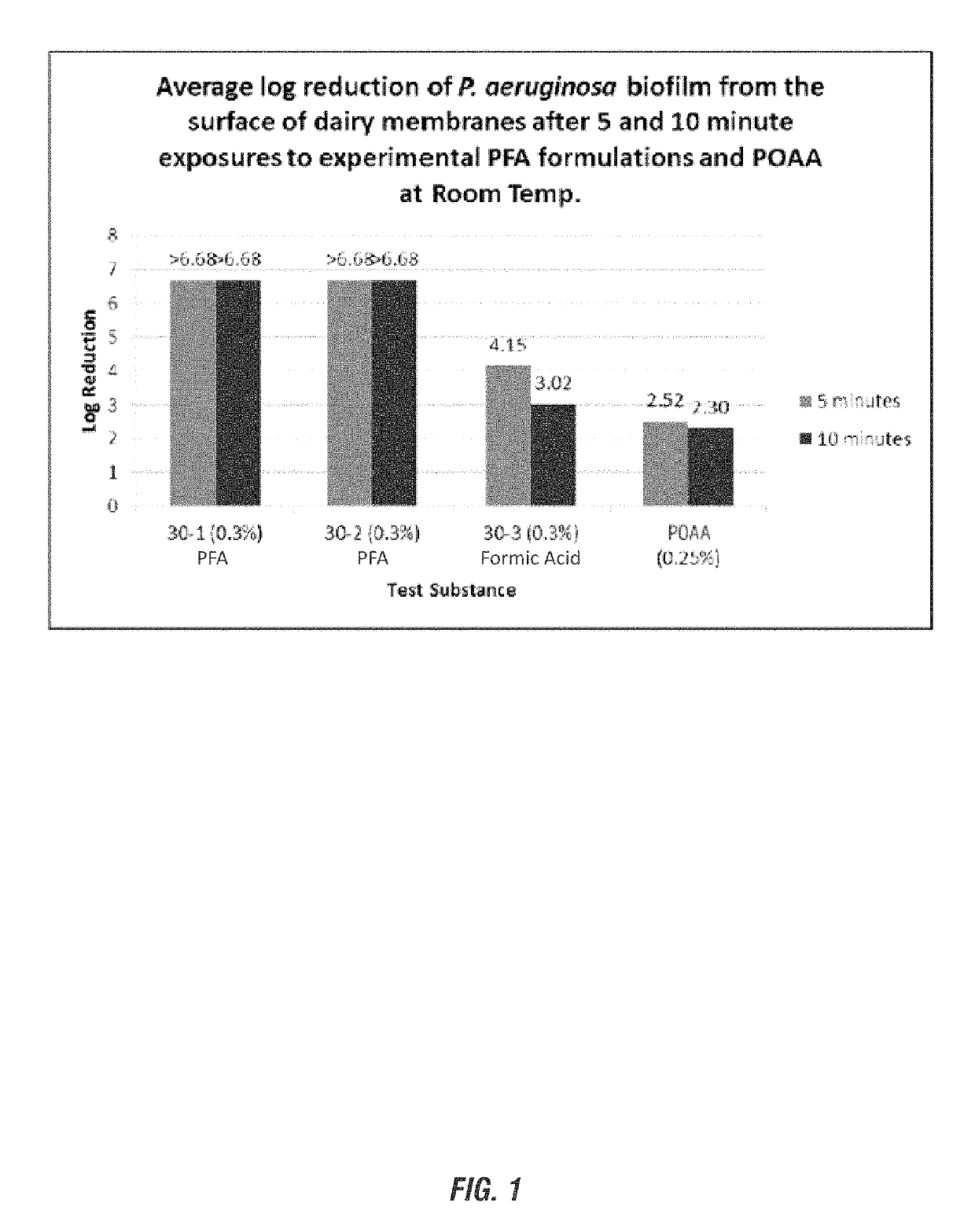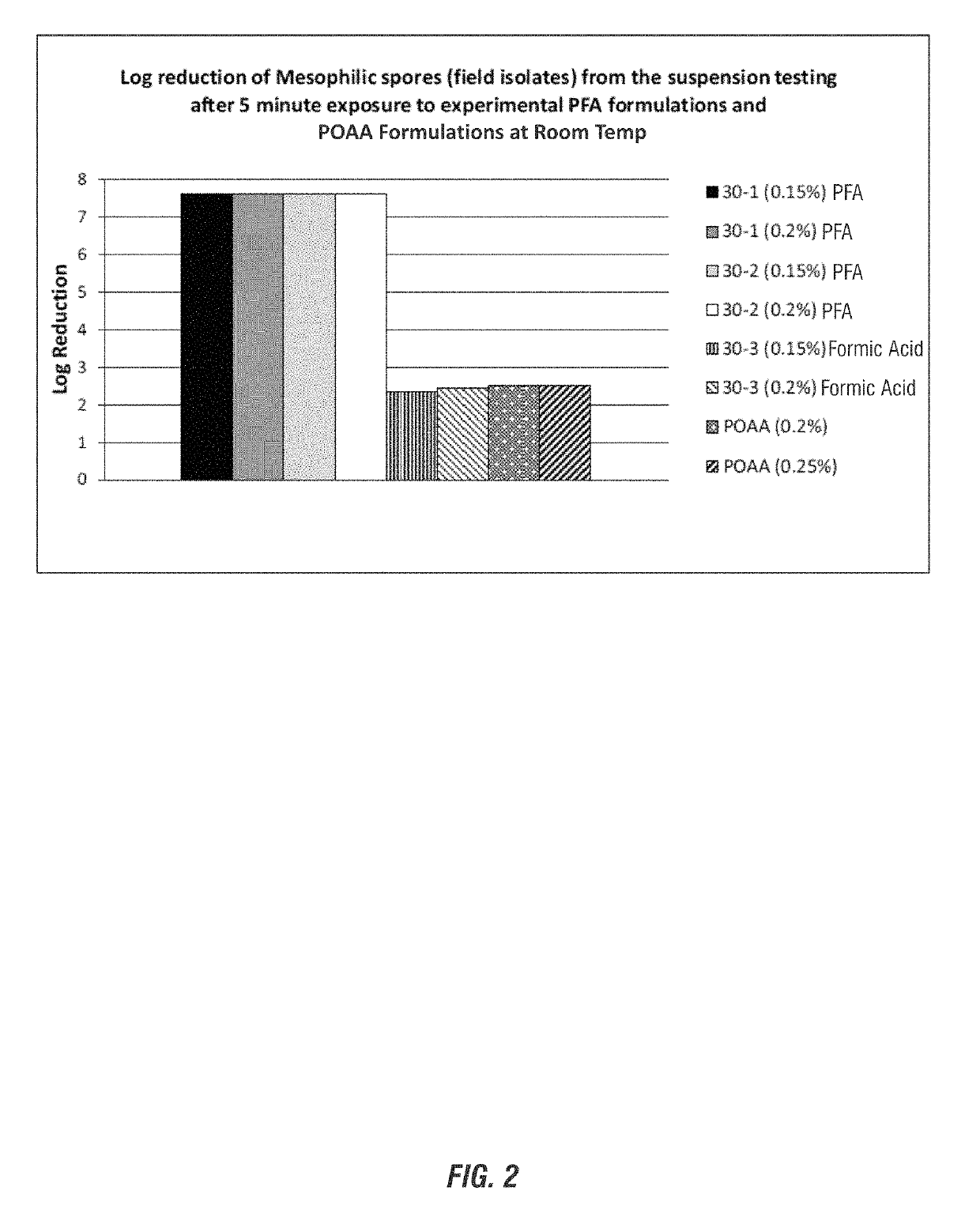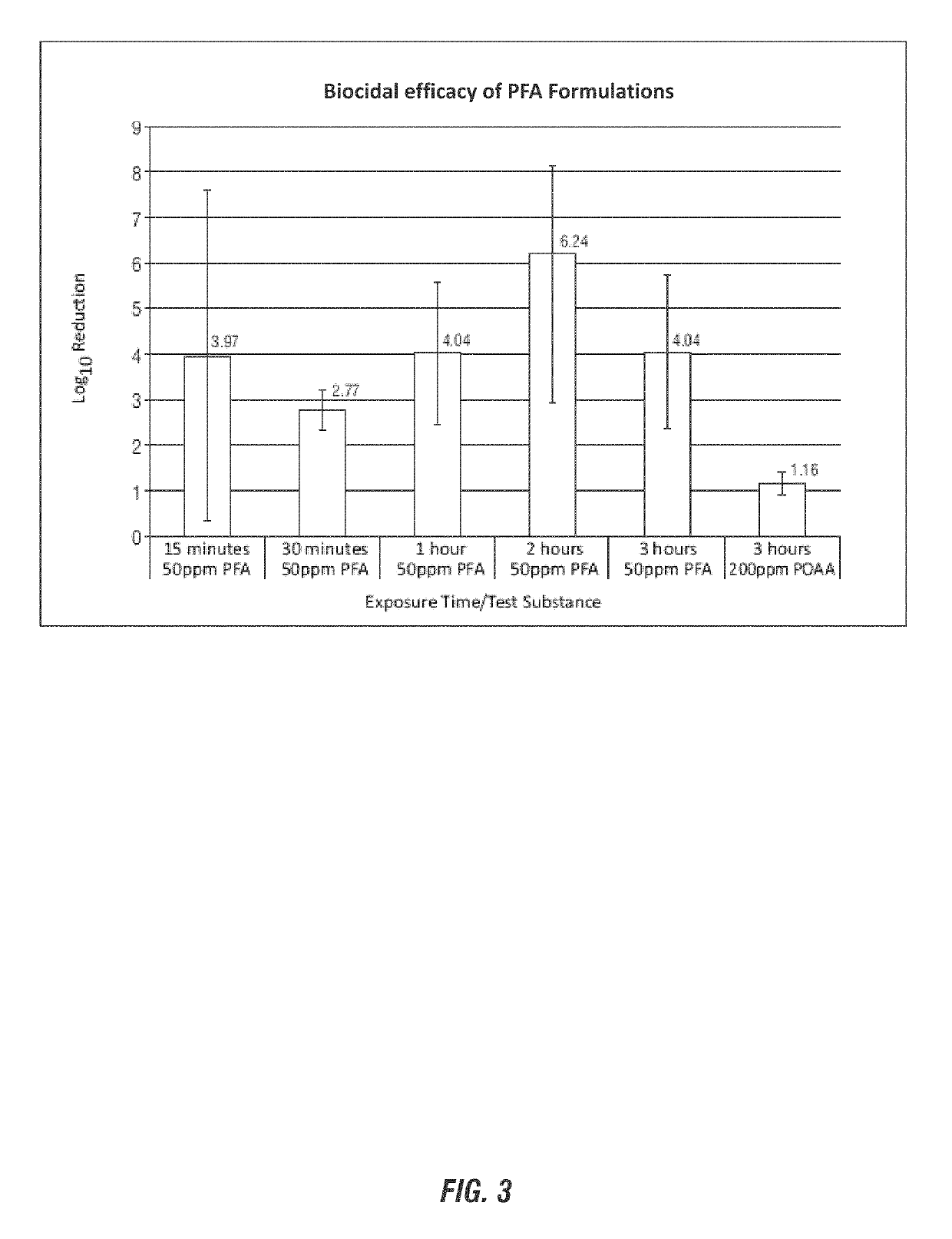Performic acid biofilm prevention for industrial CO2 scrubbers
a technology of transformic acid and biofilm, applied in the direction of biocide, hollow article cleaning, disinfection, etc., can solve the problems of reducing efficiency and increasing operating costs, and achieve the effect of efficiently killing and removing biofilms and other soils, prolonging processing periods, and reducing and/or eliminating the cleaning of such surfaces
- Summary
- Abstract
- Description
- Claims
- Application Information
AI Technical Summary
Benefits of technology
Problems solved by technology
Method used
Image
Examples
example 1
[0190]The removal of biofilm was tested to determine efficacy of biofilm removal and kill rates of Pseudomonas aeruginosa. Pseudomonas are well-known as common ‘pioneer’ bacteria and often tested for biofilm-inhibiting agents' effectivity. The bacteria are known to excrete polysaccharides and generate biofilm on a variety of surfaces very rapidly (including, for example, membrane filtration elements), as well as commonly demonstrate resistance to various antimicrobial compositions. However, bacteria that exist in a biofilm are phenotypically different from suspended cells of the same genotype; therefore the study of biofilm in the laboratory requires protocols that account for this difference. Laboratory biofilms are engineered in growth reactors designed to produce a specific biofilm type. Altering system parameters correspondingly results in a change in the biofilm.
[0191]Pseudomonas aeruginosa (ATCC 700888) was the organism used. An isolated colony was aseptically removed from an ...
example 2
[0194]Mesophilic bacterial endospores (also referred to as spores in this Example) were further evaluated for the efficacy of peroxyformic acid or removal and kill rates. The procedure outlined in Example 1 was followed replacing Pseudomonas aeruginosa with field isolates of mesophilic spores against varying concentrations of actives of the peroxyformic acid according to a lower active concentration (0.15% PFA composition 30-1 and 0.2% PFA composition 30-1) at a 5 minute exposure time and compared to peroxyacetic acid compositions (0.2% or 0.25% of peracetic acid compositions). The results of these experiments are shown in FIG. 2.
[0195]As illustrated in FIG. 2, both concentrations (0.15% and 0.2%) of formulas 30-1 and 30-2 were particularly effective in reducing mesophilic spores at a 5 minute exposure time at a lower actives concentration than what was evaluated in Example 1. Composition 30-3 (0.15% and 0.2%) showed comparable log reduction with peracetic acid composition.
example 3
[0196]Reduction of P. aeruginosa Biofilm Using Different Exposure Times of Peroxyformic Acid. P. aeruginosa ATCC 15442 biofilm was grown on the surface of 24 polycarbonate coupons following ASTM method E2562-12: Standard Test Method for Quantification of Pseudomonas aeruginosa Biofilm Grown with High Shear and Continuous Flow using CDC Biofilm Reactor. After 48 hours of biofilm establishment, the coupons were removed from the reactor and placed into individual centrifuge tubes. Three coupons per test condition were tested for disinfectant efficacy using ASTM method E2871-12: Standard Test Method for Evaluating Disinfectant Efficacy against Pseudomonas aeruginosa Biofilm Grown in CDC Biofilm Reactor using Single Tube Method. Sets of three coupons were exposed to 4 mL of 50 ppm PFA for exposure times of 15 minutes, 30 minutes, 1 hour, 2 hours and 3 hours, while coupons treated with 200 ppm POAA were exposed for 3 hours only. After the desired exposure time, 16 mL of neutralizing mediu...
PUM
| Property | Measurement | Unit |
|---|---|---|
| temperature | aaaaa | aaaaa |
| temperature | aaaaa | aaaaa |
| temperature | aaaaa | aaaaa |
Abstract
Description
Claims
Application Information
 Login to View More
Login to View More - R&D
- Intellectual Property
- Life Sciences
- Materials
- Tech Scout
- Unparalleled Data Quality
- Higher Quality Content
- 60% Fewer Hallucinations
Browse by: Latest US Patents, China's latest patents, Technical Efficacy Thesaurus, Application Domain, Technology Topic, Popular Technical Reports.
© 2025 PatSnap. All rights reserved.Legal|Privacy policy|Modern Slavery Act Transparency Statement|Sitemap|About US| Contact US: help@patsnap.com



